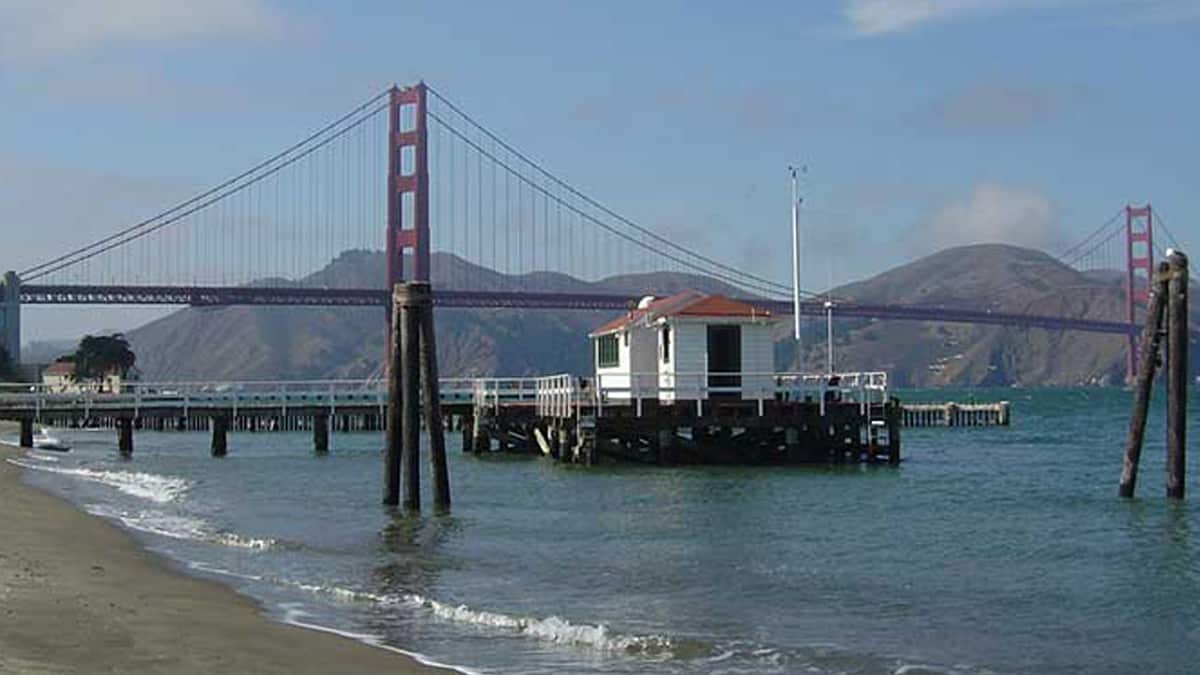Experts at the National Oceanic and Atmospheric Administration (NOAA) have embarked on a five-year scientific journey through America’s waterways.
NOAA, along with several national and international partners, is updating the baselines used to measure water level heights and depths along U.S. coastlines and in the Great Lakes. One of the goals is to make navigation safer for mariners and shippers.
According to NOAA, the U.S. maritime transportation system consists of more than 25,000 miles of waterways, ports and other navigable waters. It is the backbone for moving goods, services and people throughout the U.S. and abroad.
NOAA tide gauge house at Fort Pulaski, Georgia. (Photo: NOAA)
Chris DiVeglio, Maritime Services Program manager with NOAA’s Center for Operational Oceanographic Products and Services (CO-OPS), told FreightWaves that there is a concentration of real-time water level stations at ports. Each station references a particular datum used as a basis for calculations or measurements.
“A lot of these seaports are continuing to see growth. Not just in the frequency of the ships calling, but also the size of the vessels,” DiVeglio said.
More than 95% of all U.S. trade involves some form of maritime transport, and ships move $1.4 trillion worth of products in and out of U.S. ports every year. Ship operators across the globe rely on accurate information about ocean conditions, including water levels, currents and winds. This leads to efficient planning of shipping routes, maximizes cargo on board and can make navigating narrow shipping lanes safer.
“Eventually, there may be changes that are applied to nautical charts,” DiVeglio added. “[This is] because the depths on the nautical charts are referenced to different datums for the sake of navigation.”
The forthcoming updates to the National Tidal Datum Epoch (NTDE) and International Great Lakes Datum (IGLD) represent a significant undertaking. Several dozen NOAA scientists and contractors are working on the project. With an expected release in 2025, the new datums will improve NOAA’s ability to measure and deliver continuous water level data. This will help scientists improve storm surge predictions, benefiting shippers as well as coastal residents and business owners.
NOAA’s water level and tidal datums are generated with data collected from more than 210 gauge stations in the National Water Level Observation Network. These stations are located in the continental U.S. and U.S. territories. Datums are required for everything from NOAA nautical charts to U.S. Army Corps of Engineers infrastructure projects and local marsh restoration. They can be applied to support safe marine navigation, coastal hazard mitigation, sea level trend analysis and marine boundary determination.
Long-term control stations have been collecting data since 2002, and these stations are serviced annually to maintain their equipment. This includes, but is not limited to, acoustic sensors, pressure sensors, data collection platforms and satellite antennae. Along with continued maintenance, NOAA will have to perform geodetic surveys over the next five years to accomplish its goals.
Illustration of an NOAA tide gauge house. (Image: NOAA)
“What we need is geodetic levels between the tidal benchmarks on the surrounding land and our actual sensor leveling points to ensure there’s been no movement in the sensors,” Michael Michalski, NOAA oceanographer and Datums Team lead, told FreightWaves. “That way we know the data that’s been collected over those 19 years has very high accuracy and precision.”
Tide and water level datums are standard elevations used to reference water level heights and depths. So they may be recovered when needed, such datums are referenced to certain benchmarks. Each type of datum represents a unique phase or behavior of the water along the coast or in the Great Lakes. NOAA is the nation’s official source for tidal and Great Lakes water level datums, such as the commonly used tidal datums of Mean Lower Low Water and Mean High Water.
Producing tidal and water level datums is a challenging, highly complex process that will be carried out by a skilled team of oceanographers and other experts.
“This is a cross-divisional effort between our field operations division … engineering division … data processing team, datums team and a number of upper-level administrative teams,” Michalski said.
Updating both the NTDE and the IGLD requires extensive fieldwork, data processing, quality control and coordinated outreach to impacted communities and stakeholders.











